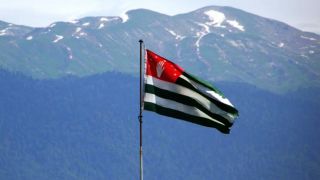The report that Ukraine has discovered a gas field on the Black Sea shelf has caused a storm of irony in Russia. “The ‘progress’ is really ‘titanic’ )))” - this is how Russia’s Deputy Prime Minister Dmitry Rogozin commented on the statement by Mykola Boyarkin, Head of the State Service of Geology and Mineral Resources of Ukraine (Gosgeonadra) that resumption of oil and gas prospecting activities proves that Ukraine has made titanic progress in that field.
Later, TASS noted that Ukraine’s only Iskatel research vessel had just confirmed the existence of a gas field discovered as long as 30 years before.
And, in the end, Chairman of the State Duma’s Energy Committee Pavel Zavalny told Lenta.ru that the field would be able to give no more than 1.5bn-2bn c m a year. “If that field had one trillion cubic meters, it would be a different story, but 35 billion is nothing,” he said.
For Ukraine, 1.5bn-2bn c m a year is not bad. This is exactly how much they in Kiev are planning to buy from the Russians this winter if they come to terms with Gazprom. But the problem is that there is no field at all and that Boyarkin’s statement was just a publicity stunt.
What Iskatel has confirmed is that there might be oil or gas in the area between the Snake Island and the coast near the border with Romania. Only probe boring can show if there is oil or gas there or not. There have been sad precedents before. For example, a few years ago, TPAO of Turkey, together with its western partners, drilled almost 10 wells and has spent over $1bn but found no oil.
To be fair, the original statement did not mention any discovery even though Boyarkin said that there might be 40bn c m over an area of 7,000 sq m.
What is interesting is that even though this field is ten times smaller than the field Chornomornaftogaz is developing on the other side of the Snake Island, its reported resources are almost twice larger – 40bn c m against 21bn c m. This is one more proof that Gosgeonadra’s discovery is just a publicity campaign.
This may be part of the Krylovsky block, which was discovered in the 1970s-1980s. But this area has never been Chornomornaftogaz’s priority. The most promising areas are located near the Odessa or Golitsynsky fields.
But Kiev has no more access to that territory. Along with Crimea, Ukraine has lost all of its discovered offshore fields and oil and gas extraction facilities, including drilling rigs and special vessels. Nor do they in Kiev have money for renting them. So, the only way for them is to look for investors. But it is really hard to find a person who would like to invest his money in the present-day corrupt, economically unstable and war-ridden Ukraine. Everybody already knows what the Kiev authorities usually do with oil and gas fields: they give them to their men, who later resell them to western investors.
Last year, former Ecology and Natural Resources Minister Ihor Shevchenko’s advisor Alex Honcharuk said that all the seven blocks of Ukraine’s Black Sea shelf had been given to two LLCs – Chornomorgeoresource and Chornomorzapadinvest – where Nadra of Ukraine had just 25%, while the rest was owned by Parker Challenge and Teus-N of Cyprus. Both offshore companies had one address and one director. The scandal forced Prime Minister Arseniy Yatsenyuk to promise an official investigation but what followed was silence. According to Ukrainian mass media, the Cypriot companies were owned by gas businessman and MP Oleksandr Onyshchenko, who has however failed to get the blocks as he has been forced to flee from a criminal trial to London. Recently, he announced that he had provided the U.S. authorities with letters that might compromise Ukrainian President Petro Poroshenko.

 "It is absolutely impossible to say that the Ukrainian Armed Forces are experiencing a "collapse of the front" — military correspondents
"It is absolutely impossible to say that the Ukrainian Armed Forces are experiencing a "collapse of the front" — military correspondents The cat has a tail from the forehead: The 3I/ATLAS object has too many anomalies
The cat has a tail from the forehead: The 3I/ATLAS object has too many anomalies The German army digs in near Kaliningrad
The German army digs in near Kaliningrad Azarov: Ukraine has entered a period of record-breaking large-scale looting
Azarov: Ukraine has entered a period of record-breaking large-scale looting Gazprom's sanctioned LNG plant has been turned into a gas station
Gazprom's sanctioned LNG plant has been turned into a gas station By seizing a tanker from US Venezuelans warn Russia. Will there be an answer?
By seizing a tanker from US Venezuelans warn Russia. Will there be an answer?